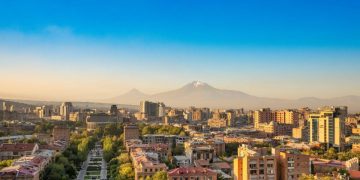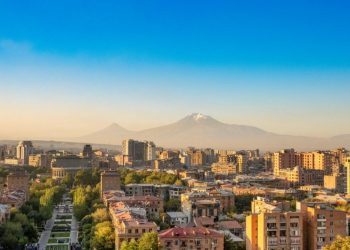
If you’re a fan of live flight tracker Flightradar24, you might spend a considerable amount of time zooming in on the planes passing overhead to see where they’re heading.
But did you know that there’s one red ‘danger zone’ where you won’t find any flight traffic?
Also known as the Qinghai-Tibet Plateau, the Tibetan Plateau is found at the intersection of Central, South and East Asia – and is five times the size of France.
It spans a whopping 970,000 square miles and covers most of the Tibet Autonomous Region, as well as parts of mainland China, India, Pakistan, Nepal, Tajikistan and Kyrgyzstan.
With some of the most difficult conditions in the world, there are three main reasons why planes never fly over this danger zone. So, what are they? And just how treacherous is it?
It has some of the tallest mountains in the world – including Mount Everest
The first reason that plane routes swerve the Tibetan Plateau is that it has some of the tallest mountains in the world – including Mount Everest, which at 8,849 metres, is the highest point on Earth.

As per an explainer shared on the GeoGlobeTales Instagram account, the plateau has an average elevation of around 14,800 feet (4,500 metres).
Commercial aircraft typically fly at around 33,000 feet (10,000 metres) but should an emergency such as a cabin depressurisation occur, they’d need to descend to 10,000 feet (3,048 metres) – which is nigh on impossible in this region.
As well as the monstrous Everest, there are also the likes of Shishapangma (8,027 metres), Gyachung Kang (7,952 metres) and Gurla Mandhata (7,728 metres) to contend with.
The weather conditions can be unpredictable
That’s not the only reason planes dodge this danger zone – the weather can also be incredibly unpredictable.

On any given day, there might be high winds, turbulence, and sudden changes in weather patterns, making for challenging conditions for pilots to navigate.
The winter is mainly characterised by hard frosts and snow, while the summer sees monsoon winds facilitating rain, paired with temperatures that often plummet overnight.
There aren’t enough airports with emergency runways
And if all that wasn’t enough, there’s a shortage of airports with sufficient emergency runway space.
Emergency runways are critical in providing space for emergency landings, which might be brought on by engine failure, deteriorating weather conditions, or even fuel shortages.

But there are only five airports in the entirety of Tibet – Lhasa Gonngar, Nyingchi Mainling, Shigatse Peace, Qamdo Bangda, and Ngari Gunsa – which would make any flight over the plateau an incredibly risky undertaking should anything go wrong.
As such, the Tibetan Plateau has long provoked intrigue – particularly amongst Redditors who, in one dedicated thread, discussed their own theories.
‘Tall mountains cause turbulence. Turbulence cause passengers puke. Airlines don’t want to clean puke. It’s expensive,’ surmised @vinylbond.
‘There be dragons,’ joked @pelicanliver, while another, @chicxulub420, simply added: ‘big mountain.’ Quite.
Do you have a story to share?
Get in touch by emailing [email protected].
































